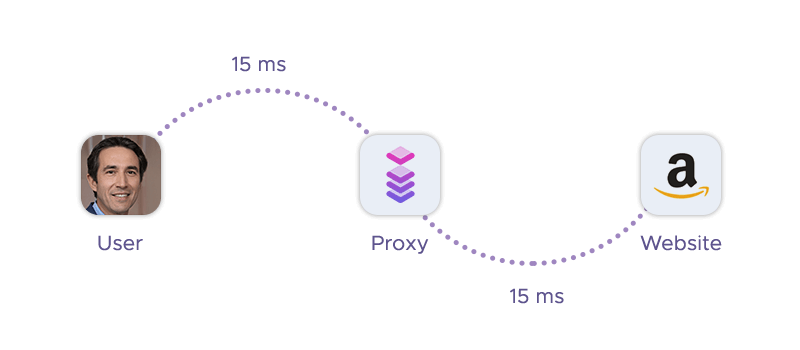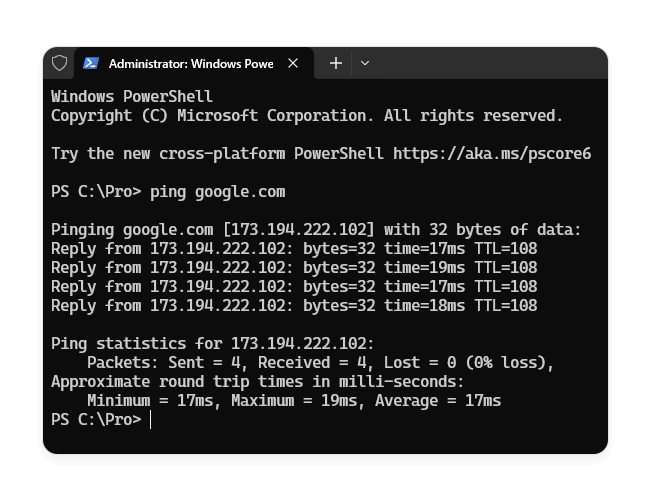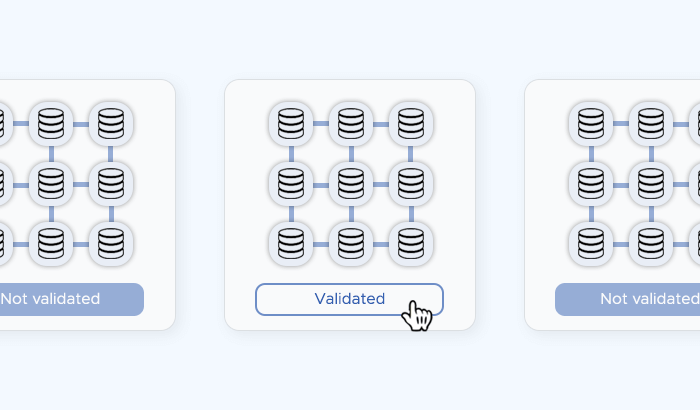

In today’s connected world, speed and responsiveness are crucial for everything from online gaming to web scraping. One key factor that impacts these experiences is ping – a simple yet powerful measurement of network latency. In this article, we’ll learn about what ping is, why it matters, what affects it, and how using the right proxies can help you reduce latency for better performance.
What is ping?
In networking, ping is a basic diagnostic tool used to test the reachability of a device on a network and to measure the time it takes for data to travel back and forth. The term comes from sonar technology, where a signal is sent out and its echo is timed to determine distance – similarly, the ping utility sends a small packet of data (an ICMP echo request) to a target IP address and waits for a response (an ICMP echo reply).
The time between sending the request and receiving the reply is called latency and is measured in milliseconds (ms). A lower ping indicates a faster, more responsive connection, while a higher ping suggests delays or potential network issues. Ping is often used to troubleshoot connectivity problems, evaluate network performance, or assess the responsiveness of a remote server.

Though simple, ping provides essential insights into how efficiently data moves across networks, which is especially important when using proxies or accessing geographically distant services.
Why ping matters
Ping plays a key role in how fast and responsive a network connection feels. While bandwidth measures how much data can be transferred at once, ping reflects how quickly a single request travels to a server and back. This makes it especially important for applications that rely on real-time communication.
In online gaming, for instance, a high ping can cause noticeable lag, making controls feel delayed or unresponsive. In video calls or live streaming, it can lead to awkward pauses or out-of-sync audio. Even for everyday browsing, high ping can slow down how quickly a page starts loading after a user clicks a link.
Ping is also relevant behind the scenes – automated systems like web scrapers, bots, or monitoring tools often need to make rapid-fire requests across the internet. In these use cases, every millisecond counts. A consistently low ping can help reduce timeouts, increase request throughput, and ensure smoother operation overall.
For companies that rely on proxy networks, ping becomes a performance benchmark. The lower the latency between the client and the proxy – and between the proxy and the target server – the faster and more reliable the data flow.
What affects ping?
Several factors influence ping, and understanding them can help diagnose latency issues or improve network performance. Here are the most common causes:
Physical distance: The farther data has to travel, the longer it takes. If you're connecting to a server on the other side of the world, your ping will naturally be higher than if the server were local.
Network congestion: Just like road traffic, overloaded networks slow everything down. High usage during peak hours or on shared connections can lead to increased latency.
Routing efficiency: Data often passes through multiple intermediate servers, known as hops. Inefficient routing – where packets take unnecessarily long or complex paths – can raise your ping.
ISP throttling or filtering: Some internet service providers may inspect or deprioritize certain types of traffic, introducing delays. Security filters and firewalls can also add processing time.
Type of connection: Wired connections (like Ethernet) usually have lower and more stable ping than wireless ones (like Wi-Fi or cellular), which can suffer from interference and signal loss.
Use of proxies or VPNs: When traffic is routed through a proxy or VPN server, it introduces an extra step that can either increase or, if well-optimized, stabilize ping. The location and quality of the proxy play a major role.
Ping and proxies – what to expect
Using a proxy server introduces an additional step between your device and the destination server, which can affect ping – but not always in the way you might expect. In some cases, proxies increase latency; in others, they can actually help reduce it.
The key factor is geographic location. If your connection routes through a proxy that’s physically closer to the target server than you are, it can shorten the total data path. For example, if you’re based in the U.S. and scraping a website hosted in Germany, using a proxy located in Frankfurt may result in lower overall latency than connecting directly from your original IP.
This is especially useful in web scraping, where reducing round-trip time means faster data retrieval, fewer dropped requests, and higher throughput. By aligning proxy location with the destination server, you can optimize ping and improve the efficiency of automated operations.
On the other hand, if a proxy is poorly placed – far from both the user and the target server – it can introduce unnecessary delays. This is why choosing a proxy provider with a well-distributed, performance-optimized network is essential.
Measuring and interpreting ping
Ping is easy to measure using basic tools, but understanding what the numbers mean is just as important. Whether you're diagnosing a slow connection or evaluating a proxy’s performance, knowing how to interpret ping results can help you make smarter choices.
How to measure ping
The simplest way is by using the built-in ping command on any operating system. For example:
ping google.com
This sends multiple ICMP echo requests and displays the response times in milliseconds. Online tools like Speedtest.net or PingPlotter offer more advanced visuals and long-term monitoring. What the numbers mean:
- Under 50 ms – excellent, near real-time responsiveness
- 50–100 ms – good for most applications
- 100–200 ms – noticeable delay, may affect real-time use
- Over 200 ms – significant lag, potential performance issues
Consistency is key: Occasional spikes are normal, but regular fluctuations or high jitter (variability in ping) may point to routing issues or overloaded servers. If you're using proxies and notice unstable ping, it could be time to re-evaluate your node selection or provider.
Reducing ping with the right proxy setup
While you can’t control every factor that affects ping, using proxies strategically is one of the most effective ways to optimize it – especially when dealing with geographically distributed targets or latency-sensitive tasks like web scraping.
Choose proxies close to the target server
One of the most straightforward ways to reduce ping is to select proxy servers that are physically near the websites or services you’re connecting to. This minimizes the distance data needs to travel and avoids long-haul internet routing.
Use purpose-built proxy infrastructure
Not all proxies are created equal. Consumer-grade or free proxies often run on overloaded, unstable networks that add significant latency. In contrast, premium proxy providers like Infatica offer datacenter and residential proxies with optimized routes, low congestion, and strong uptime guarantees – key ingredients for low-latency performance.
Distribute requests with load balancing
When running large-scale scraping or automation projects, evenly distributing requests across multiple proxies helps avoid bottlenecks. This can reduce both ping and error rates, especially when targeting dynamic or rate-limited websites.
Test and rotate regularly
Ping can fluctuate over time, so it’s smart to test proxy latency periodically. Infatica, for instance, provides access to a wide pool of IPs – enabling intelligent rotation that helps maintain consistently low ping by avoiding slow or degraded routes.












